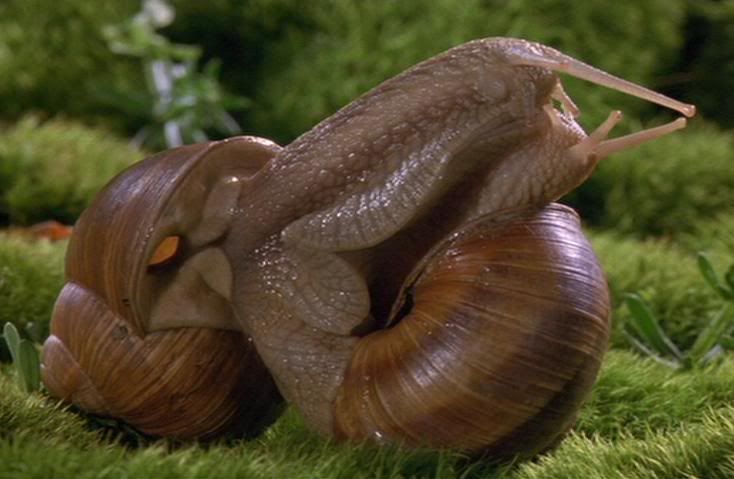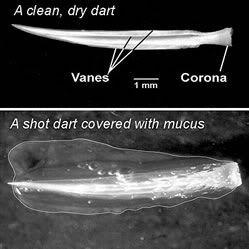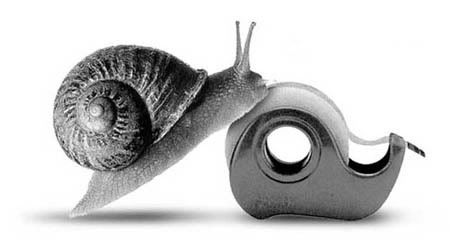If you are entering into the wild world of snails, you will also begin to notice that the way in which they are built has allowed for their survival through centuries. One of the ways in which this has continued to build is through the abilities to reproduce by these creatures. The different features and ways in which they can do this also provides them with the capacity to keep slugging on the land.
Reproductive Make-up of Snails
Snails will be able to reproduce differently than almost any other type of creature because of their species and their make-up. This begins with the build that all snails have. Snails are considered to be hermaphrodites. This means that every snail will have both male and female reproductive organs. This is especially consistent among land snails and most marine snails. The only snails that have not adapted this attribute is some freshwater and marine species, specifically including Apple Snails and periwinkles. These two types of snails still have a separate male and female species.
 SNAILS LAYING EGGS
SNAILS LAYING EGGSAll snails will be considered sexually mature by the time they are one year old. This is because the life span of most species does not last for more than five to seven years, allowing for a faster growth rate of the species. The make-up of the snails will include their reproductive organs on the side of their body. This is close to the top of their body as well, allowing for easier abilities to mate and to grow the baby snails.
Growing Into Baby Snails
The mating practices of snails is one that allows for new snails to be brought into the dirt and water at a consistent rate. Snails will go through a complete mating ritual with each other, usually which will communicate to the other snail for an average of two to twelve hours. At the end of this ritual, the pair will fertilize the eggs in the other. It is known that a snail can carry up to 100 eggs at a time.
When the eggs are fertilized, they will go through a process of growth inside the snail. This begins with the fertilization moving the snails into a specific amount of development inside the embryo. This takes place with the snails laying eggs and burying them into a cool place in order to develop. For land snails, they will be buried underneath the dirt in order to be cared for. With marine snails, the eggs will be placed next to a solid area, such as a rock. This will allow the eggs to stay in the same place and develop without being harmed.
It will typically take a snail egg two to four weeks in order to develop. As soon as they hatch, they will immediately move into a survival mode. This is because their shells will still be in a weak form. Their reaction is to find calcium as soon as they hatch by either eating their own egg or eating other eggs in order to get the extra nutrients. It will take around three months for the snails to completely form. While this takes place, they will stay in a nest that has been built for them, with the transformations being seen through a change in color, from a clear color into a blue then into the adult form that is representative of the species. After the snails are completely developed, they will detach from their parents and move into a different shell.
The mating procedures of snails is one that moves through a specific process that helps the species to grow and survive in their respectable areas. From the beginnings of sexual maturity to finding the rate mate to the hatching of the eggs, is a specific way in which the snails are able to move into a world of growing a larger snail family.
Now, the thing is, how do they actually do it? As in, having sex?
Snail reproduction is a curious tale. Snails are hermaphrodites, but although individuals contain both male and female sex organs, they do not self-fertilize. The two to six hour marathon session that is snail copulation is actually an exchange of sperm between two individuals, combined with plenty of rubbing, biting and 'eye-stalk' waving. Individuals use the received sperm to fertilize their own eggs — a process that is necessary to maintain genetic diversity in the population.

The exchange of rubbing,bitting and "eye-stalk" waving
What makes some snail species particularly interesting to is their use of 'love darts' during copulation. About one third of snail species manufacture hard, sharp darts which they 'fire' at the object of their affections (i.e. other snails).


An illustration of the "love dart"
It was incorrectly believed that these darts were a nuptial gift of calcium —a major constituent of snail shells—from one snail to another. Like a bunch of flowers or a box of chocolates in humans.Another belief was that the dart was intended to arouse the receiver and indicate the shooters readiness to mate.
However, those are only beliefs. There are scientific researches done.Basically, snails want to reproduce as much as possible. Snails that have a way of ensuring that their sperm, rather than another's, is used to fertilize eggs will therefore sire more offspring. This is known as sperm competition.
The love dart is a tool of male manipulation. Received sperm is moved to a storage area within the female reproductive system where it is used to fertilize eggs over a period of months or years. However, many sperm fail to reach the safety of the storage area and are instead digested in great numbers en route. Research conducted revealed that of the millions of sperm received by a snail, only 0.025 percent actually survive. Love darts contain mucus that temporarily contracts a part of the female reproductive system in a way that allows a greater number of sperm to reach the storage area and survive; In short, 'he shoots….she stores.'
Being hit with a love dart may increase the survival of sperm, but fortunately for some snails it is not essential for copulation. Poor shooting is commonplace— one third of all love darts either fail to penetrate the skin or they miss the target completely.
Being hit with a love dart may sound cute and comical, but for the recipient there may be costs. Love darts are the equivalent of being stabbed with a hypodermic needle. Evidence from mating trials conducted in the labs indicates that snails try to avoid being hit with love darts. Copulating snails are commonly seen jostling, in an attempt to hit but not be hit. But, all is fair in love and war.
Snails seriously have very unique way of reproduction.
Fascinating right?




No comments:
Post a Comment